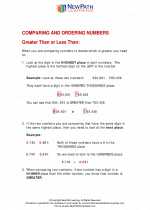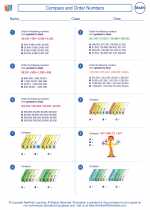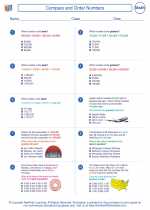Integers
An integer is a whole number that can be positive, negative, or zero. Integers include all the positive whole numbers, all the negative whole numbers, and zero. In other words, integers are the set of numbers {..., -3, -2, -1, 0, 1, 2, 3, ...}.
Types of Integers:
- Positive Integers: These are whole numbers greater than zero. For example, 1, 2, 3, 4, ...
- Negative Integers: These are whole numbers less than zero. For example, -1, -2, -3, -4, ...
- Zero: Zero is neither positive nor negative, and it is an integer.
Operations with Integers:
When performing operations with integers, the following rules apply:
- Adding Integers: When adding integers with the same sign, add their absolute values and keep the sign. When adding integers with different signs, subtract the smaller absolute value from the larger one and use the sign of the number with the larger absolute value.
- Subtracting Integers: Subtracting an integer is the same as adding its opposite.
- Multiplying and Dividing Integers: When multiplying or dividing integers, the rules for the signs are as follows:
- If the signs are the same, the result is positive.
- If the signs are different, the result is negative.
Absolute Value of Integers:
The absolute value of an integer is its distance from zero on the number line. The absolute value of a positive integer is the number itself, and the absolute value of a negative integer is the number without its negative sign.
Comparing Integers:
When comparing integers, remember that larger numbers are to the right of smaller numbers on the number line. For example, -3 is less than -2, which is less than -1, and so on.
Practice Questions:
- What are the five smallest positive integers?
- What is the absolute value of -8?
- If you add -5 and 3, what is the result?
- What is the product of -4 and -7?
Now that you have learned about integers, try to answer the practice questions to test your understanding.
[Integers] Related Worksheets and Study Guides:
.◂Math Worksheets and Study Guides Fifth Grade. Compare and Order Numbers

 Worksheet/Answer key
Worksheet/Answer key
 Worksheet/Answer key
Worksheet/Answer key
 Worksheet/Answer key
Worksheet/Answer key
